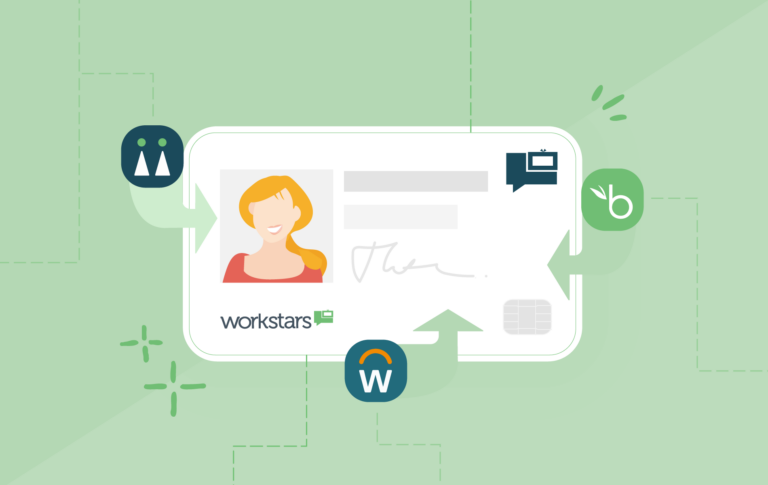Wellbeing in the workplace: what does the latest research say?
The CIPD released its latest Health and Wellbeing at Work report a few months ago. It was a comprehensive piece of research, covering 1,078 organizations and 3.2 million employees across the UK. It examined just how healthy workplaces are, obtaining detailed insights into what’s going on beneath the surface. What, for example, are the top stressors in the workplace? What factors lie behind some of the longer-term absence and mental health issues? When it comes to encouraging healthy working lifestyles, are leaders doing as much as they can?
What did the survey find?
One of the big headlines looks encouraging at first glance. Absence has hit an all-time low at 5.9 days per employee per year. That’s good… isn’t it?
Going back over the years, there’s plenty of evidence that suggests better wellness means less absence, like this 2008 in-depth meta-analysis by PricewaterhouseCoopers. There are undoubtedly well-established connections between good health and lower absence levels, and higher wellbeing increasing the overall likelihood of business success, as cited in the Engage for Success report in 2014. Across many organizations, it’s clearly the case that effort invested in wellbeing has made some really positive inroads into improving absence figures.
The CIPD report, however, is flagging up something very important. Lower absence levels in themselves are not necessarily a sign of good wellbeing. There might be other things going on that are reducing them too – and they are not desirable by any means.
The survey responses highlight the fact that the culture of ‘presenteeism’ is still on the rise in UK workplaces. There are clear indications that employees are struggling with heavy workloads. In fact, they’re the top cause of stress in the workplace.
Could it be that people feel so stressed about their workloads, they’re forcing themselves into work to try to deal with them even when they’re unwell? That would make the absence figures look better but would it be delivering the performance organizations need? It’s unlikely. And given that it’s chipping away at employee wellbeing at the same time, it doesn’t take much imagination to see how a vicious circle can form.
Employees are working longer to try to keep their heads above water
Sixty-three percent say they use their holidays to work or they work when off sick, whilst 83% say they still go into work when they’re feeling unwell. In two out of three of those scenarios the sickness absence figures might not be taking a hit – but look at the bigger picture. Is that really how organizations should be functioning?
If someone’s genuinely sick, they need time off to allow themselves to recover. Instead, the signs are that they feel they must struggle on. This kind of behavior can take its toll on mental health. While the cosmetics of the short term absence figures might look good, it’s brewing up far bigger problems for employees and companies down the line. With mental ill-health being identified as the biggest cause of long-term absence (59%) in the survey, followed by stress (54%), it’s apparent how these shorter-term behaviors can eventually come to a head.
Are organizations doing everything they can?
The report’s indicating that organizations are still struggling to manage stress and mental wellbeing. It’s certainly encouraging to see that more organizations are receptive to considering what they can do to help.
The fact that companies are so willing to make it part of their focus is a major step forward in the right direction. Yet only 40% of surveyed organizations have trained managers who can support staff with mental health issues. Only 30% of employees say they’re confident that managers can handle sensitive discussions and direct employees to the right place to get help. It’s not easy, but the fact is there’s still a lot more to be done.
Where can organizations start with improving wellbeing?
There’s no quick and simple answer. Employee wellbeing and good mental health are complex issues. There are many contributing factors including heavy workloads, management style and relationships between employees. In many instances, some of those factors don’t even come from within the organization itself. But by considering a multifaceted approach to developing a culture where wellbeing’s prioritized, organizations will be better placed to make progress.
For example, what could be done to support employees with their financial wellbeing? While this clearly isn’t something companies are ultimately responsible for, it is something they can offer support with as part of overall efforts to improve wellbeing. Financial worries can affect work performance significantly: an FCA report in 2017 highlighted that 90% of employers believed financial concerns impacted on employees’ workplace performance and ultimately on the bottom line.
Steps could be taken to look at the working environment too. While this can be constrained by the nature of the workplace, there could be ways to modify it to give employees the working space they prefer, ideally with some scope to personalize it too. Organizations might also consider whether they could offer flexible working arrangements to help employees manage work and life responsibilities more effectively.
Many companies are encouraging better physical wellbeing too. There are various ways to do this. Not every company has space for a gym, but some could provide a room for an exercise class. Some could take advantage of their workplace location to arrange lunchtime walking groups. Others could opt to roll out a wellbeing app that encourages people to make personal health awareness part of the everyday working routine.
Companies can also reflect on what they can do to create a culture where individuality and the employee voice are valued and relationships are strengthened. As this report from the Mental Health Foundation discusses, relationships between colleagues are a crucial part of the wellbeing equation. Organizations can nurture a greater sense of connection between colleagues by encouraging a culture where appreciation of one another’s day to day efforts is continually shared and celebrated.
This peer-to-peer recognition approach reduces the reliance on management to be the standard-bearers of acknowledging effort and achievement. Instead, it gives employees a voice, it empowers them to lead conversations. That builds feelings of positive connection and grows the support network that’s so vital for increasing a sense of wellbeing and feeling valued.
This approach can also become a way to introduce time and wellbeing perks into an organization. These kinds of perks can be used by employees to enhance wellbeing and meet their own personal needs, goals and preferences. Rather than being rewarded with financial thank-you’s, this kind of recognition operates far more at the emotional level.
Read more: Nine ways to support mental wellbeing in the workplace
In fact, many modern-day recognition practices are now starting to be seen as contributors to assisting employees with their overall wellbeing. The benefits of knowing efforts are valued as much as results, the positive effects of giving, the insights offered by in-the-moment recognition feedback: there are many ways recognition influences employees’ mindsets and wellbeing.
If you’d like to find out more about how recognition can offer a sustainable boost to your wellbeing program, get in touch with us today to arrange a demonstration.


 How Machias Savings Bank improved employee satisfaction and increased commitment to company values
How Machias Savings Bank improved employee satisfaction and increased commitment to company values
 Great managers vs natural leaders: What’s the difference (and does it matter?)
Great managers vs natural leaders: What’s the difference (and does it matter?)
 Workstars now integrates seamlessly with the HRIS you use every day
Workstars now integrates seamlessly with the HRIS you use every day